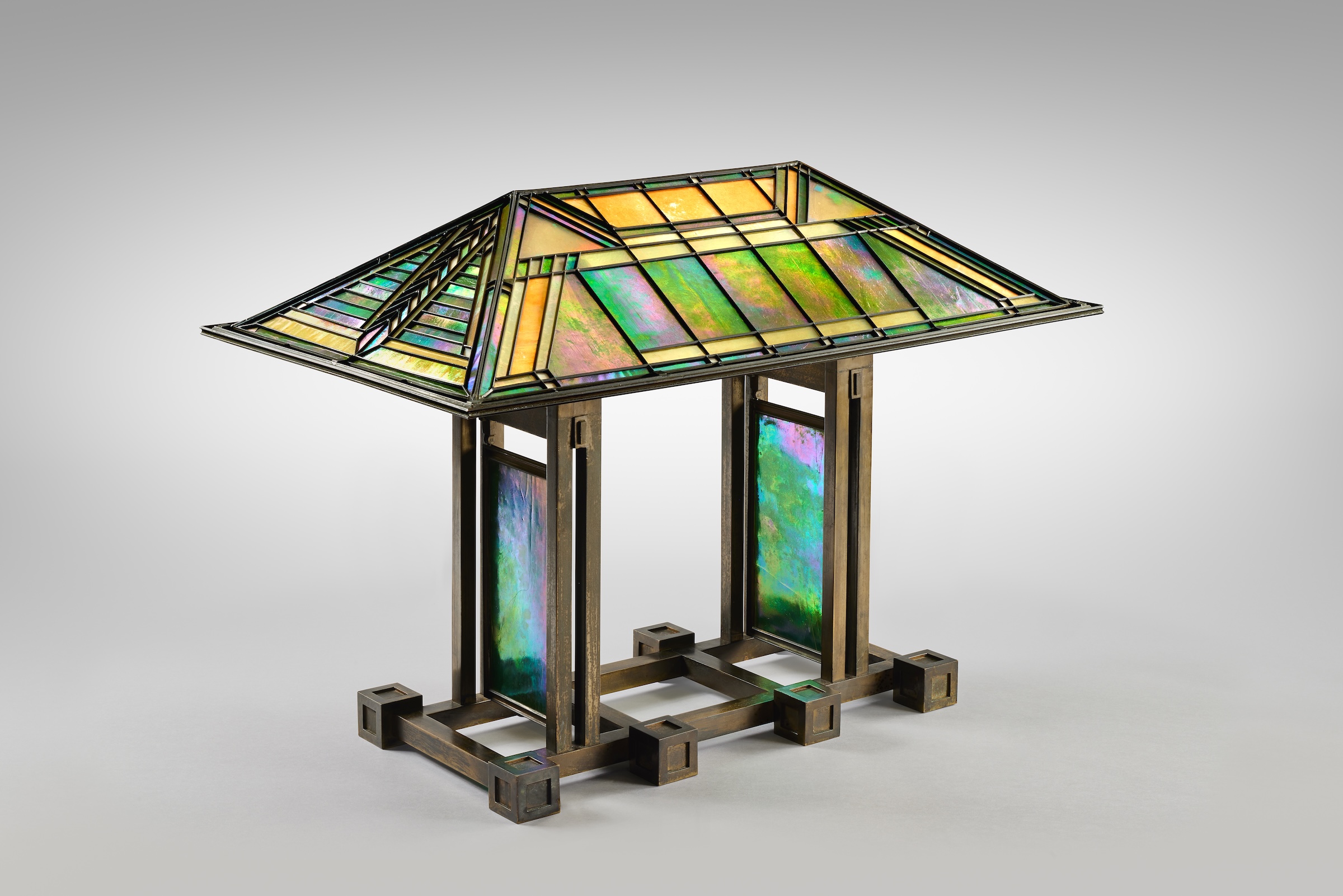A Frank Lloyd Wright-designed double-pedestal lamp became the most valuable piece by the famed American architect to sell at auction when it fetched $7.5 million at Sotheby’s modern art evening sale last night, May 13. Following a lively 11-minute bidding battle, the piece both surpassed its high estimate and more than tripled its previous 2002 sale price of $1.98 million, landing with a phone bidder via Sotheby’s Chairman Jodi Pollack.
The sale price may raise eyebrows, as those numbers are typically reserved for Wright-designed landmarks, residencies, and other properties that emerge on the real estate market. But the high hammer for the 23-by-32-inch lamp might have something to do with Wright’s unique creative ethos.
“Frank Lloyd Wright was not merely an architect; the total environments he designed were inclusive of furniture, lighting, textiles, art glass, and more,” Eric Rogers, a spokesperson for the Frank Lloyd Wright Building Conservancy, told Hyperallergic in an email.
The lamp, which has opalescent grid-like glass panels, a wide-angled overhanging shade, and figures of local sumac on its pedestals, originates from a monumental residential project that Wright undertook at the outset of the 20th century for progressive socialite Susan Lawrence Dana.
“When Susan Lawrence Dana commissioned Wright to oversee the transformation of an existing home in Springfield, Illinois, the result was not just a building — it was a complete work of art,” Rogers said.
What began as a remodeling project of Dana’s late father’s home in Springfield, Illinois ended up being a two-year reconstruction project that was completed in 1904. The resulting 12,000 square-foot residence, adorned with more than 100 custom pieces of furniture and more than 450 patterned art glass windows, doors, and lighting fixtures, is now a public museum maintained by the Historic Preservation division of the Illinois Department of Natural Resources.
Notably, Wright designed a pair of double-pedestal lamps, one of which was sold at auction and another that was purchased by the Dana-Thomas House Foundation in the late 1980s and can be found at the museum today. The lamps share natural motifs and earth tones in harmony with the glass paneling in the house, which may have been inspired by traditional Japanese shoji screens, Sotheby’s said in a catalogue note. Wright was famously fascinated by the art and architecture of Japan, evinced by his many trips to the country and his 1912 book The Japanese Print: An Interpretation. Although the Dana house predates his first visit to the country in 1905, it does follow his first encounter with Japanese architecture and artwork at the country’s pavilion in the 1893 Chicago World’s Fair, which had a recreation of an 11th-century Buddhist temple outside Kyoto.

Rogers said that “there is an active market” for Wright-designed objects, making it all the more vital to carefully document their provenance. The conservancy has tracked a recurring trend of custom furniture and fixtures being removed from Wright homes to then be sold for financial gain. The Conservancy, he explained, was founded in part to promote the preservation of “Wright’s complete visions as they were executed.”
“[It] remains our hope that Wright-designed items will remain — or be returned to — the buildings for which he designed them,” Rogers continued. “Our vision is that the remaining built works designed by Frank Lloyd Wright are valued and preserved — in their entirety — as a vital part of our artistic, cultural and architectural heritage.”

